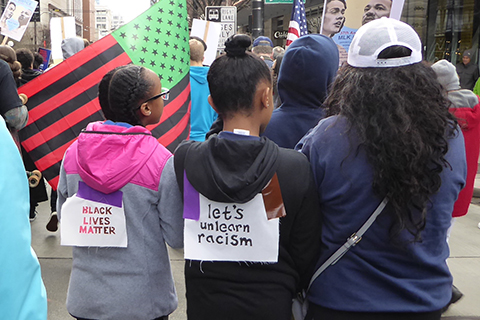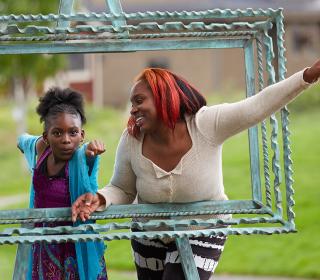WHAT IS REPRODUCTIVE JUSTICE?
While reproductive rights are most often associated with access to safe and legal abortions, SisterSong, the Women of Color Reproductive Health Collective, defines reproductive justice as the human right to maintain personal bodily autonomy, have children, not have children, and parent the children we have in safe and sustainable communities.
If you’ve been keeping up with the news lately, you’ll know that the reproductive rights of women, trans men, and gender nonconforming people are always hotly debated. Often framed as a moral issue, some people may not realize that the ability to control your reproductive choices impacts and is impacted by social and economic issues such as poverty, unemployment, LGBTQ+ rights, and immigration.
While the majority of people impacted directly by restrictive reproductive laws are women, it is important to not consider this a “women’s issue.” Not only should family planning involve all partners, it is also crucial to include everyone with uteruses in the conversation, including trans men and gender nonconforming folks, both of whom are often left out despite their equal need for safe reproductive care options.
It cannot be denied that laws aiming to restrict reproductive rights have women’s bodies in mind, but that does not negate the impact such laws have on trans men and gender nonconforming people, especially considering that both groups already face discrimination and barriers to access for healthcare. Anything that delegitimizes reproductive care access for some inevitably creates ground for denying access for all.
IMPACT ON COMMUNITIES OF COLOR

The impact of an unplanned pregnancy can be destabilizing, no matter who you are – you can lose your housing, lose your job, have to leave school, be at greater risk of violence in your relationship. Being pregnant does not exist in a vacuum, and this ripple effect is even greater if you are a person of color.
The U.S. is the only technologically advanced nation where the maternal death rate is actually rising, often because too many low-income women and people of color can’t access quality healthcare. Women of color fare worse than white women in every major health indicator from maternal mortality to the incidence of cervical cancer. The poor health outcomes for women of color do not just reveal bad policy – they are evidence that the U.S. is failing to provide equal access to reproductive healthcare. By having control over reproductive decisions, all people have the opportunity to pursue the life they desire.
It’s crucial to also remember our country’s history of treating pregnant people of color. Many women of color — particularly African American women in the South, Puerto Rican women, women of Mexican origin in the Southwest, and Native American women through Indian Health Service — were sterilized, often without their full knowledge or consent. This pattern of controlling the bodies of all women and pregnant people, but especially those of color, is necessary context for understanding and talking about reproductive justice for communities of color today.
HOW TO HELP
Black women have a long history of being on the frontlines in the fight for reproductive justice. This September marks 30 years since the distribution of the groundbreaking brochure, “We Remember: African-American Women are for Reproductive Freedom.” This document, signed by leaders like Shirley Chisholm, Maxine Waters, and Dorothy Height, represented a much needed moment of solidarity for black women in 1989. “Ordinary black women who felt ashamed to discuss their abortions publicly now had the support of some of the most powerful black women in the country.”
The fight for reproductive justice continues today, as does the need for visibility for the unique struggles and needs of communities of color. What can you do to continue the legacy of advocating for the reproductive rights of people of color?
- Donate to an organization in your community, or in a community in need.
- Volunteer your time as a clinic escort, or supporting the administrative needs of a women’s health clinic in your city.
- Read and listen to stories about reproductive justice, especially from women and people of color and other intersecting marginalized identities, like people with disabilities or immigrants.
- Spread awareness – share the articles and stories you come across with your family and friends. Remind people to use gender inclusive language, and emphasize that restrictive laws disproportionately impact communities of color.

Annalee Schafranek is the Marketing & Editorial Director at YWCA. She contributes agency news, press releases, and media coverage to the website. Annalee’s educational and professional experience has always focused on the place where gender equity and media meet.
We share the stories of our program participants, programs, and staff, as well as news about the agency and what’s happening in our King and Snohomish community.

